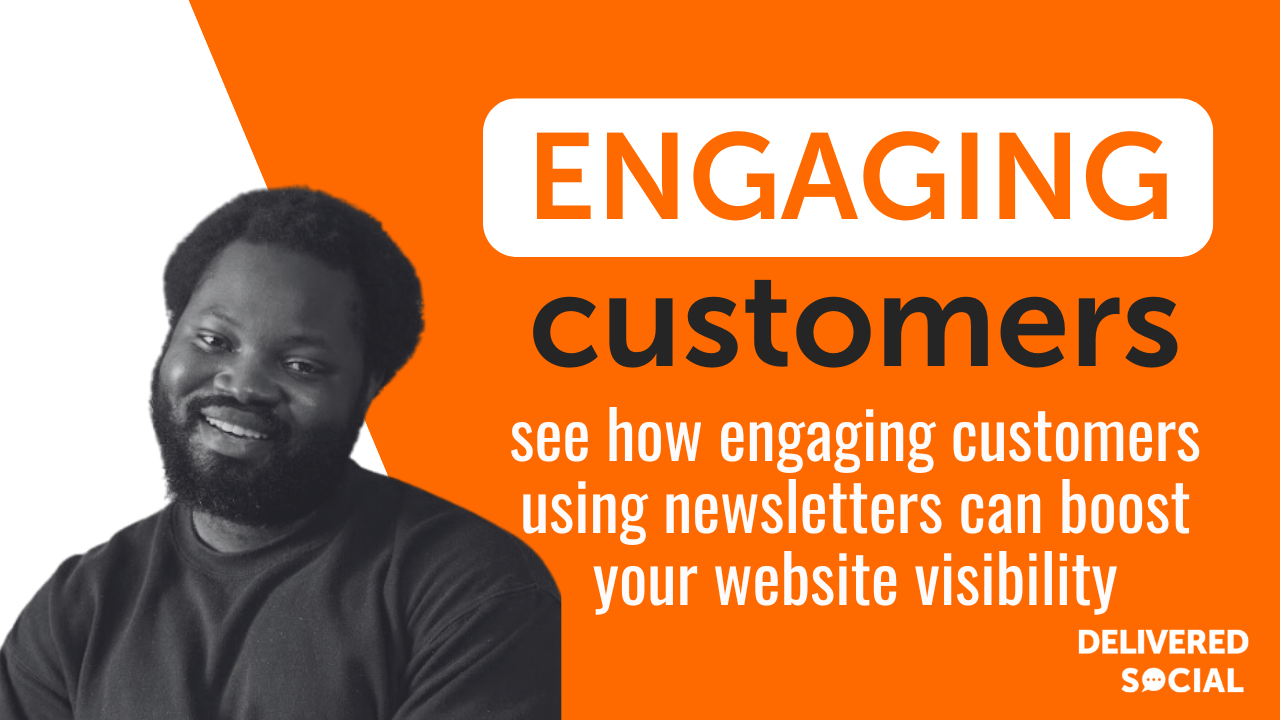
Can a newsletter improve SEO? Yes, it can, and businesses that use email marketing strategically often see an increase in website traffic, engagement, and search rankings. While newsletters do not directly influence SEO the way backlinks or keywords do, they play an important role in driving consistent website visits, reducing bounce rates, and encouraging customer interaction—all factors that search engines consider when ranking a site.
A well-crafted newsletter keeps your audience engaged, encourages them to revisit your website, and increases the likelihood of them sharing your content. When readers click through to your website from an email, spend time engaging with your content, and interact with your links, search engines see this as a sign that your website is valuable. The more engagement your content receives, the better your chances of improving rankings over time.
Additionally, people are often worried and ask can a newsletter improve SEO? But it does more! Newsletters improve SEO, help build brand authority and credibility, which can lead to natural backlinks and increased brand searches on Google—two factors that positively impact SEO. A strong email strategy also supports content marketing by distributing valuable articles, blog posts, and product updates to a targeted audience, ensuring your content reaches the right people at the right time.
In this article, we at Delivered Social will explore exactly how newsletters improve SEO, best practices for crafting engaging email content, and common mistakes to avoid. If you're looking for an easy way to boost your search rankings while keeping customers engaged, your newsletter might be the missing piece of your SEO strategy.
Let's break down the connection between email marketing and SEO and why it matters for your business.
How Does A Newsletter Improve SEO And Why Does It Matter?
Many businesses overlook the impact of newsletters on SEO because email marketing does not directly influence search rankings. However, newsletters play a significant role in driving organic traffic, increasing engagement, and strengthening brand authority, all of which contribute to better SEO performance.
Newsletters drive website traffic: Sending regular newsletters with valuable content encourages recipients to visit your website. When subscribers click through to read a blog post, browse products, or explore services, it signals to search engines that your site is relevant and valuable. This consistent traffic can lead to improved rankings over time. For niche industries like real estate, newsletter content can be especially powerful. Here's a great example of how to create a real estate newsletter that delivers local market insights, listings, and tips designed to generate shares, clicks, and backlinks, all of which support SEO growth.
Lower bounce rates and higher engagement: A well-structured newsletter attracts the right audience—people already interested in your brand. When these visitors land on your website, they are more likely to stay longer, browse multiple pages, and interact with your content. Low bounce rates and high session durations indicate quality content to search engines, which can positively impact rankings.
Content distribution and backlink potential: Sharing your latest blog posts, industry insights, or case studies through newsletters increases visibility and engagement. If recipients find your content valuable, they may share it on social media or link to it from their own websites, creating organic backlinks that boost SEO.
Brand searches and authority: The more people engage with your brand through email marketing, the more likely they are to search for your business directly on Google. Increased brand searches signal trust and credibility, factors that search engines consider when ranking websites.
Encouraging user-generated content and social shares: An engaging newsletter can prompt recipients to comment, share, or discuss your content on social media, creating more opportunities for brand exposure and referral traffic.
Mobile-friendly experience: With more people checking emails on their phones, ensuring that newsletters and linked web pages are mobile-friendly improves user experience. Google prioritises mobile-friendly sites, making it essential to optimise newsletters for seamless mobile browsing.
Tracking and improving SEO strategies: Newsletters provide insights into which content performs well. Tracking metrics such as open rates, click-through rates, and conversions helps businesses refine their content and SEO strategies, ensuring they align with audience interests.
A well-crafted newsletter not only keeps customers engaged but also supports your overall SEO efforts by driving traffic, encouraging interactions, and strengthening your brand's online presence.

Best Practices To Write A Newsletter That Improves SEO
A newsletter can be a powerful tool to improve SEO, but only if it is well-structured, engaging, and designed to drive traffic to your website. Simply sending emails won't have an impact—your content must encourage readers to click, explore, and engage with your website. Here are the best practices to ensure your newsletters boost SEO effectively.
Create compelling subject lines: The subject line determines whether your email gets opened or ignored. A strong subject line should be short, intriguing, and relevant to your audience. Avoid clickbait and instead focus on providing real value.
Use high-quality, relevant content: A newsletter should not just be about promotions. It should include blog posts, case studies, industry news, and insights that your audience finds valuable. The more engaging your content, the more likely subscribers are to visit your website.
Include clear calls-to-action (CTAs): Every newsletter should have a clear purpose. Whether you want readers to read a blog post, register for a webinar, or check out a new product, the CTA should be direct and easy to find. Use buttons and links to encourage interaction.
Optimise links for SEO benefits: When linking to your website, use descriptive anchor text rather than generic phrases like "click here." This helps search engines understand what the linked content is about. Internal linking also guides visitors to other relevant pages, increasing time spent on your site.
Make emails visually appealing: A well-designed newsletter keeps readers engaged. Use short paragraphs, bullet points, and images to break up text and improve readability. If a newsletter is difficult to read, recipients are less likely to engage with it.
Segment your audience for better results: Not all subscribers are interested in the same content. Use segmentation to send personalised newsletters based on customer interests, behaviour, or purchase history. The more relevant the content, the higher the engagement, which can lead to more site visits.
Ensure mobile responsiveness: A large percentage of emails are opened on mobile devices. Your newsletter should be fully responsive, with images, text, and links that display correctly on smaller screens. A poor mobile experience can lead to lower engagement and lost traffic.
Track performance and adjust content: Monitor open rates, click-through rates, and website visits from your newsletter. Use this data to identify what content works best and refine future newsletters accordingly.
A well-executed newsletter does more than just inform—it actively drives website traffic, improves SEO, and increases brand engagement.

Interested In Working Together?
Introducing Delivered Social. We're The Most-Rated Digital Agency In Surrey & Hampshire – We've Got To Be Doing Something Right.
Delivered Social is a digital marketing agency with one mission—to help businesses grow. We're famous in Guildford and Portsmouth for our social clinics. We believe in free advice. We build lasting relationships because our team prides itself on being helpful, which our clients appreciate.
If you are looking for a new website or an agency to manage your social media presence, we can help.
If you need something slightly different, here's a super handy list of all our services, or you can always email us.























